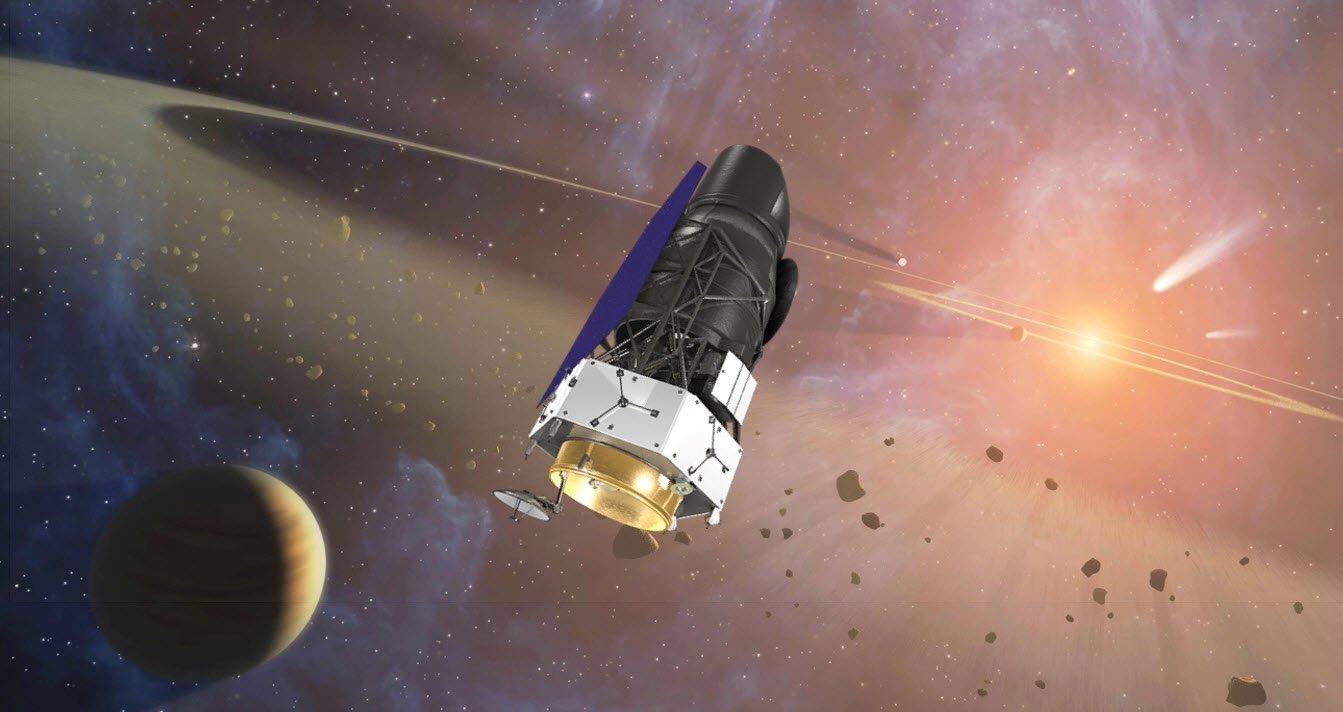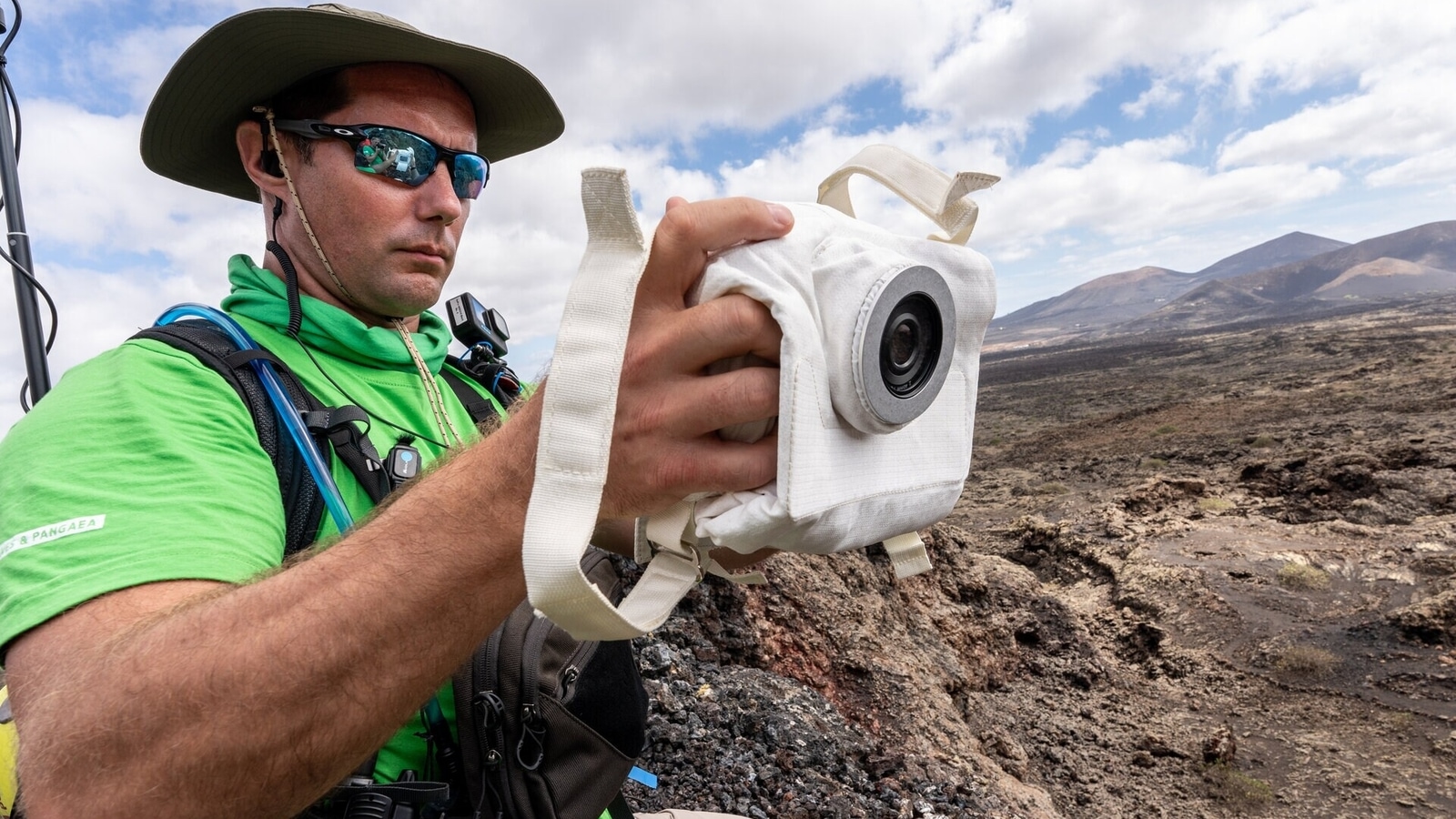/cdn.vox-cdn.com/uploads/chorus_asset/file/25489035/Rollei35AF_04s_copy.jpg)








NASA and Nikon have signed an agreement to jointly develop a handheld camera, called HULC (Handheld Universal Lunar Camera), for use in the Artemis III mission to explore the lunar South Pole region. The camera is a modified Nikon Z 9 camera with Nikkor lenses and NASA's thermal blanket for dust and temperature protection. It features a custom grip with modified buttons for easier handling by astronauts wearing thick gloves. The camera incorporates the latest imaging technology and electrical components modified to withstand radiation challenges. It will be the first mirrorless handheld camera to be used on the Moon and will demonstrate its capabilities at the International Space Station before the Artemis mission. [d35bfd17]
NASA and Nikon have joined forces to develop a next-generation Lunar Artemis Camera for future Moon missions. The camera, currently in the prototype stage, is based on a modified Nikon Z 9 camera and Nikkor lenses. It features a custom grip and modified buttons to accommodate the use of thick gloves. The final version of the camera will incorporate the latest imaging technology and have modified electrical components to minimize radiation issues. Unlike the handheld cameras used during the Apollo program, the new lunar camera will have a viewfinder and video capabilities. The camera's specifications are being determined based on initial testing with a standard Nikon Z 9. The partnership aims to provide a single device that can capture both still imagery and video for lunar missions. [a9584a2a]
NASA and ESA are collaborating to develop a next-generation camera for future Moon missions. The camera, constructed using professional off-the-shelf cameras, has been modified by NASA to withstand lunar dust and extreme thermal conditions. The camera underwent rigorous testing in lunar-like terrains in Lanzarote, Spain, as part of the PANGAEA training program. The program aims to train astronauts as effective field scientists for future lunar missions. The camera will enable astronauts to capture detailed images of the lunar surface during the Artemis mission. [e9ef819b] The Artemis program, led by NASA, aims to return humans to the Moon and establish a sustainable presence by 2024. The Artemis III mission, scheduled for 2025, will land on the Moon's south pole and explore the lunar surface in detail. The camera will be one of the tools astronauts will use on future moon missions, contributing to our understanding of the Moon and its potential for future human habitation. [7f0a9efe] Nikon, a long-standing partner of NASA, has also provided modified cameras for various space programs. The transition to Nikon mirrorless cameras is expected for future lunar missions. [2ca8c5a8]
In addition to the camera for Moon missions, NASA has also made significant advancements in exoplanet-imaging technology. The Coronagraph Instrument, designed and built at NASA's Jet Propulsion Laboratory, has passed essential tests, marking a significant advancement in space observation technology and the search for extraterrestrial life. The instrument will be part of NASA's Roman Space Telescope, set to launch by 2027. [0678becc] The Coronagraph blocks light from a bright cosmic object, allowing scientists to observe nearby objects that would otherwise be hidden by glare. It aims to enable the viewing of planets similar to Earth in size and distance from their star. The recent tests ensured that the instrument's electrical components do not interfere with the rest of the observatory and vice versa. The Roman Space Telescope's primary mission is to generate large images of the universe and conduct surveys of cosmic objects. The Wide Field Instrument on the telescope will discover tens of thousands of new exoplanets. The Roman Coronagraph's primary goal is to test technologies that have not been flown in space before, including sophisticated light-blocking capabilities that are at least 10 times better than what is currently available. The instrument's camera is highly sensitive and can detect individual photons, making it more sensitive than previous coronagraphs. The recent tests were crucial to ensure that the instrument's performance is not affected by electromagnetic interference from the spacecraft's electrical currents or from the Coronagraph itself. The lessons learned from the Coronagraph technology demonstration will be separate from the Roman Space Telescope's primary mission, which includes multiple science objectives such as studying the large-scale distribution of matter in the universe and answering questions about dark matter and dark energy. [0678becc]
The upcoming Nancy Grace Roman Space Telescope's infrared camera will capture more light than ever before, resulting in a panoramic view that is 200 times more extensive than the Hubble Space Telescope's. Astronomers are eager to benefit from the vast amount of data that will arrive on Earth shortly after Roman's launch. A team is teaching Roman how to recognize gravitationally lensed supernovae, which can be used to measure the universe's expansion rate. The Nancy Grace Roman Space Telescope will orbit from May 2027 and will uncover mysteries of dark energy, reveal exoplanets, and calculate the universe's expansion rate. Roman's cosmological research will focus on the elusive dark energy that impacts the universe's expansion throughout history. The scope of Roman's detailed surveys will allow for a quicker mapping of the universe compared to Hubble's image. Researchers are building pipelines to detect gravitational supernovae in Roman imaging. The Nancy Grace Roman Space Telescope is under the operation of NASA's Goddard Space Flight Center. [5b2253c4]
Canon's interchangeable-lens digital cameras have maintained the No. 1 share of the global market for 21 consecutive years from 2003 to 2023. Canon's EOS series of interchangeable lens digital cameras are based on the concept of 'Speed, Comfort, and High Image Quality.' Canon introduced the breakthrough EOS 300D in September 2003, capturing the top share of the global market and spurring growth in the digital SLR market. Canon has continued to launch groundbreaking products, including the professional-model EOS-1D series and the EOS 5D series. In 2023, Canon led demand for mirrorless cameras and lenses by expanding its lineup of EOS R series cameras and lenses. Canon-brand cameras comprised the number one share of Rugby World Cup France 2023. Canon will continue to refine its imaging technologies and provide products, services, and solutions that meet its customers' diverse needs. [2ca8c5a8]
Nikon has released the NIKKOR Z 28-400mm F4-8 VR lens, a versatile zoom lens ideal for varied photography needs. The lens offers an expansive zoom range from wide-angle to super-telephoto, enhanced Vibration Reduction (VR) for image stabilization, STM autofocus motor for quiet and smooth focusing, weather-sealed construction for durability, and a compact and lightweight design for easy handling. The lens opens up creative possibilities for photographers, provides steady shots with enhanced VR, offers quiet and smooth autofocus performance, and has a durable design for all weather conditions. The lens weighs approximately 1.6 lbs (725 g) and is set to become a staple in many camera bags. The release of the lens is accompanied by a YouTube video first look that showcases its potential as a game-changer in photography. [d5c1ec29]
MiNT's Rollei 35AF film camera is slowly inching toward an actual release. The Hong Kong-based camera manufacturer, MiNT, is launching a website with a waitlist for potential customers interested in the Rollei 35AF, a reincarnation of the original Rollei 35 from 1966. The new design incorporates lidar-based autofocus for its 35mm f/2.8 lens and options for automatic exposures. The Rollei 35AF is expected to sell for $650 to $800 when it launches later this year. The analog film resurgence continues with new film cameras like the Rollei 35AF, Leica's M6 rangefinder, and rumors of a new Pentax film camera. The original Rollei 35 was a fun little camera that relied on manual focus and zone focusing. It will be intriguing to see what an autofocus remix of the little Rollei is like. [03f6578e]